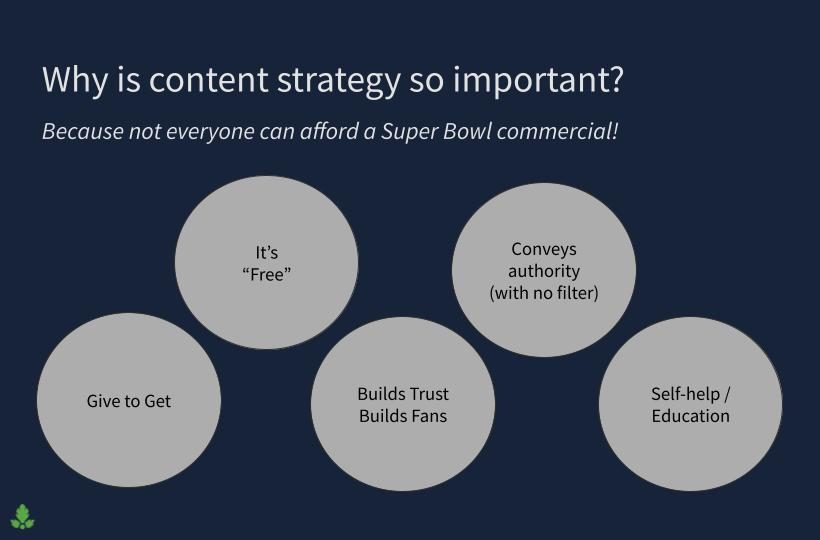Smarter Content, Bigger Results: Using Data to Write Better Content | Webinar Recap

If you’ve been working in marketing for a while, you know that it’s no longer enough to be siloed in the ways you think about content. As marketers we need to be working outside our comfort zones, which means diversifying our content sets and revamping our brand’s tactics.
This past week, Parse.ly‘s Head of Marketing, Dave Cardiel, joined Lumenad‘s Director of Content Marketing, Stephanie Totty, for a webinar to share their expertise around building out programs and creating better content. Stephanie spoke about ramping up Lumenad’s marketing program by getting creative and strategic about content. Here are a few of the highlights:
Why is content strategy so important for Lumenad?
“We can’t all afford $5M for a super bowl commercial to get our message out! Obviously very large brands can pay to play, and we’ve even seen publishers like New York Times and Washington Post spending big on traditional marketing in recent years, but that’s not for the masses.”

Why is Lumenad doubling down on their inbound marketing strategy?
“Now at Lumenad, we are creating everything from scratch. Historically, marketing hasn’t been a super strategic portion, it’s been very much a sales and growth strategy. But we decided we have to change that so we’re starting to build everything out. We just launched a brand-new website a couple of weeks ago. We have a new brand, we have brand new messaging, and we’re creating content from scratch. Building everything from scratch is intimidating and kind of frustrating, but also really fun because we get to set everything up and build something that is super strategic.”
“Right now, we are relying heavily on paid ads. Lumenad is a paid ad software, so we know how to do paid ads really, really well and we use our own software to do it. But that’s not that’s not sustainable, right? I can’t keep dumping tens of thousands or hundreds of thousands of dollars every quarter into paid ads and expect that to be sustainable long term. And so, right now, our goal in the second half of the year is really setting up all of our strategy and foundation. By the end of the year, we want 50% of all of our trial requests to be coming from inbounds or organic search. Moving into 2022, closer to 70%.“
What are they doing to reach their inbound goals?
“The first thing that we needed to do was create a sound SEO strategy. Our previous website had zero SEO. It wasn’t even taken into consideration when it was built. So, this new website that we launched, we’re starting from scratch. We’ve created a strategy around demand pages, long-form/pillar pages of content. We’re thinking about what people are looking for and creating demand pages that might help them.”
“They’re basically pages that gate our pillar content – landing pages, and we’re creating 80 of them before the end of the year. We outline them based off related SEO keywords or phrases and then somebody writes 1500 words of content to live on that page. It’s not a new tactic. It’s just using content to push towards your content.”
“We’re talking 1500 words of very SEO focused, keyword-focused content with CTAs that lead to our actual pillar content. That’s something like ‘Read this guide: do you want to apply everything that the guide is telling you? Cool. Here’s a worksheet that you can download.‘”
“We’ve optimized our website and our content for this keyword strategy, and we’ve got our e-mail outbound strategy along with ads and social that are pushing folks to pillar content as well.”
“That’s where we’re grabbing our new contacts and adding them into our e-mail and nurture processes that will eventually lead them to our free trial, which is where we’re trying to get them in the long run.”
“A lot of our efforts are also geared at getting folks directly into our free product or free trial and using that as our nurturing process.”

What is Lumenad’s strategy around ungated content?
“Once we get that foundation of pillar content created, we’ll start creating more ad hoc, one-off pieces of content that are more topical, product-centric, or educational. There are a million pieces of helpful content we could create on, for example, how to do paid ads really well. We’ll get to creating this type of content in 2022, but right now we have to create that higher level pillar content to actually get people to our site and build that awareness.”
What metrics are most important for you right now? Traffic, conversions, SEO performance, engagement, or retention?
“I think it’s really so dependent. There should be different pieces of content that are focused on all of these different things. You are going to have some pieces that are created specifically to up your SEO performance. You are going to have certain pieces that exist for conversion purposes. And you’re going to have pieces that are geared for retention, et cetera. All of these KPIs are important for different reasons and it really depends on what our go-to-market strategy is.”
Check out the rest of the webinar to hear more.